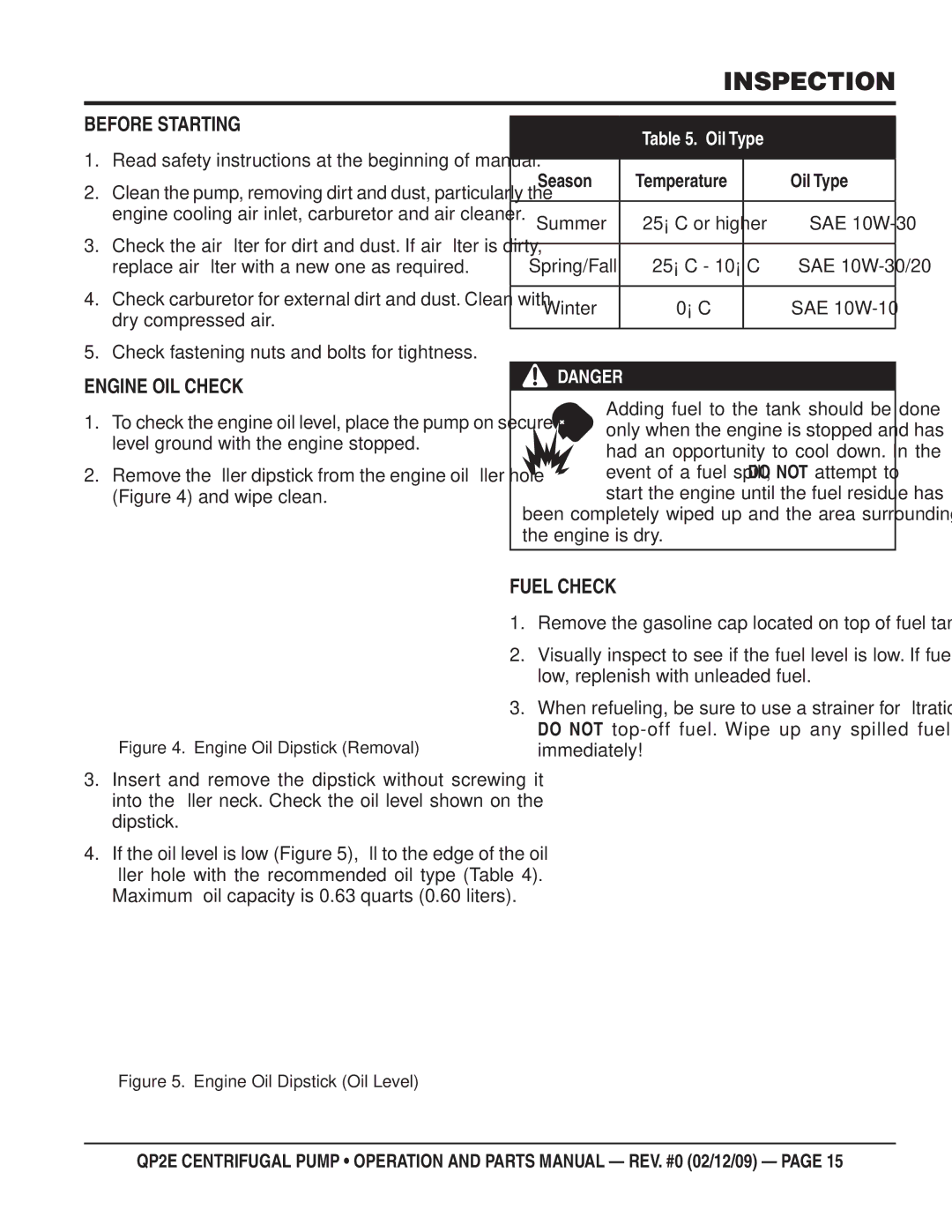
INSPECTION
BEFORE STARTING
1.Read safety instructions at the beginning of manual.
2.Clean the pump, removing dirt and dust, particularly the engine cooling air inlet, carburetor and air cleaner.
3.Check the air fi lter for dirt and dust. If air fi lter is dirty, replace air fi lter with a new one as required.
4.Check carburetor for external dirt and dust. Clean with dry compressed air.
5.Check fastening nuts and bolts for tightness.
ENGINE OIL CHECK
1.To check the engine oil level, place the pump on secure level ground with the engine stopped.
2.Remove the fi ller dipstick from the engine oil fi ller hole (Figure 4) and wipe clean.
Figure 4. Engine Oil Dipstick (Removal)
3.Insert and remove the dipstick without screwing it into the fi ller neck. Check the oil level shown on the dipstick.
4.If the oil level is low (Figure 5), fi ll to the edge of the oil fi ller hole with the recommended oil type (Table 4). Maximum oil capacity is 0.63 quarts (0.60 liters).
Figure 5. Engine Oil Dipstick (Oil Level)
Table 5. Oil Type
Season | Temperature | Oil Type |
|
|
|
Summer | 25° C or higher | SAE |
|
|
|
Spring/Fall | 25° C - 10° C | SAE |
|
|
|
Winter | 0° C | SAE |
|
|
|
DANGER
Adding fuel to the tank should be done only when the engine is stopped and has had an opportunity to cool down. In the event of a fuel spill, DO NOT attempt to start the engine until the fuel residue has
been completely wiped up and the area surrounding the engine is dry.
FUEL CHECK
1.Remove the gasoline cap located on top of fuel tank.
2.Visually inspect to see if the fuel level is low. If fuel is low, replenish with unleaded fuel.
3.When refueling, be sure to use a strainer for fi ltration. DO NOT
QP2E CENTRIFUGAL PUMP • OPERATION AND PARTS MANUAL — REV. #0 (02/12/09) — PAGE 15
